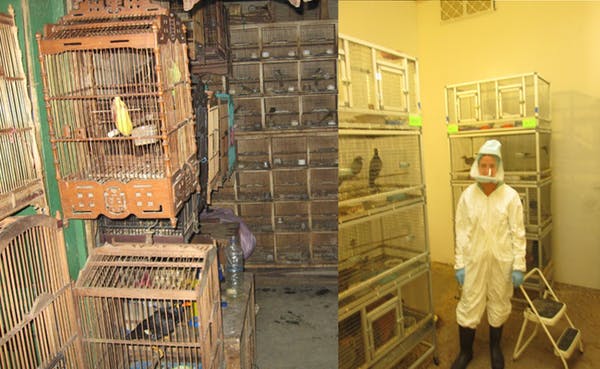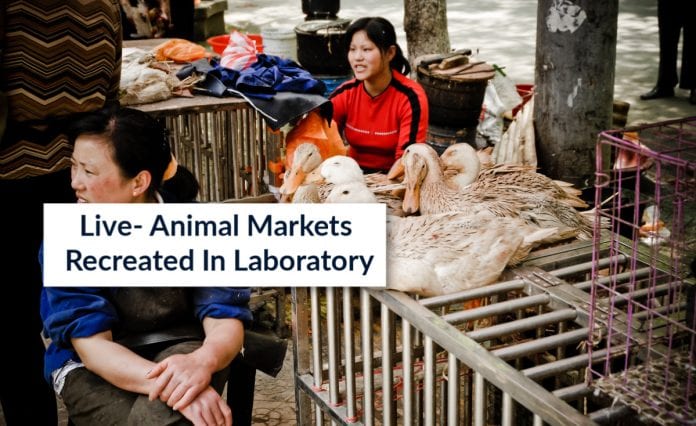Virus Transmission in Artificial Ecosystem Studied By Scientists
The newly recognized coronavirus 2019-nCoV is spreading across the world. But nobody has yet identified the origin of this highly contagious virus.
The Huanan seafood market in Wuhan, China, is believed to be the source of the virus, where a range of animals, including rabbits, bats, rodents, and wild animals, are sold along with seafood. These animals are displayed for consumption and are in close contact with the shop keepers.
Roughly two-thirds of the viruses causing multiple pandemic diseases including SARS, MERS, Ebola, bird flu, Zika, chikungunya, and the new coronavirus originated in animals before they jumped to humans.
These events show that multiple parts of an ecosystem are involved during an outbreak. For example, rodents and wild bats harbor many viruses that can attack animals and humans. When such animals come into close contact with humans, the transmission of viruses to humans is much likely to happen.
How these transmissions occur is really complicated. They can transmit through consumption of bushmeat, through insect vectors or by direct contact. And these transmissions can be affected by a range of environmental factors like humidity, sunlight, seasonal rain, soil conditions, and temperature.
The research
approach to understand how potentially pandemic pathogens interact with its human or animal hosts is really simple. Under constant conditions of humidity, airflow, and temperature, scientists focus on a single species at a time. This has helped them to understand the infectious disease processes. And the “artificial ecosystems” in the lab provide insights into how viruses and pathogens emerge to become global threats.Reconstructing live-animal markets and barnyards
Direct jumping of pathogens from animals to humans are undoubtedly rare. But there is a huge possibility for different types of interactions within a market like Wuhan that promotes pathogen transmission between species.
Scientists at Colorado State University have established an artificial ecosystem in their lab that mimics the scenarios in a wet animal market. The artificial ecosystem will help scientists to study the transmission and spread of pathogens like influenza viruses between diverse groups of mammals and birds.
Strict biocontainment conditions ensure that the deadly pathogens do not escape the lab. All exhaust air is filtered, and personnel use respirators, wear facility apparel and shower before exiting.
Artificial barnyards that housed pigeons, ducks, blackbirds, chickens, and rats all together are used for their studies on bird flu. The animals and birds shared the common feed and water and interacted freely with each other.

Rats were never seen outside their enclosed nests during day time, as occurs in real barnyards. But they were seen bathing in the water pool and harassing ducks in the dark. Scientists introduced some infected ducks to the group to see how the infection spreads. They also investigated how avian influenza virus transmits among rabbits, quail, chickens, and pheasants. The birds housed beneath the infected birds were more likely to become infected as the waste runs downhill. Also, they observed that Quail were the most susceptible to infection.
The scientists came to the conclusion that virus spreads among the freely interacting animals in an artificial barnyard and shared water sources were massively accumulated with viruses.
They also created a more sophisticated artificial ecosystem that allows modulating humidity, temperature, rain, wind, and other environmental conditions.
Scientists learned from the artificial ecosystem that it is more typical to study emerging pathogens by focusing on infection in a single species at a time, despite the known complexity of these sorts of interactions in the real world. This is due to the regulatory processes by which vaccines or diagnostics are approved. They expect a definitive demonstration of efficacy and safety in individual animal models.
Scientists hope that the new approach could help in understanding the transmission of viruses among species and in the development of new vaccines, therapeutics, and diagnostic tests.






























